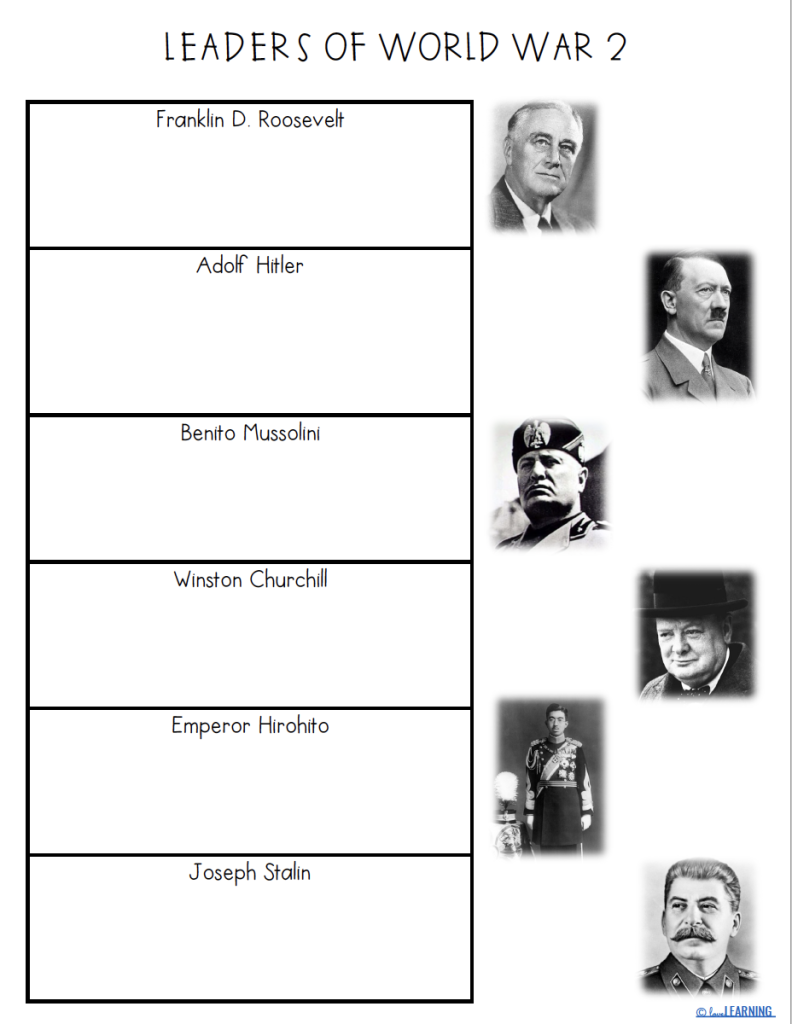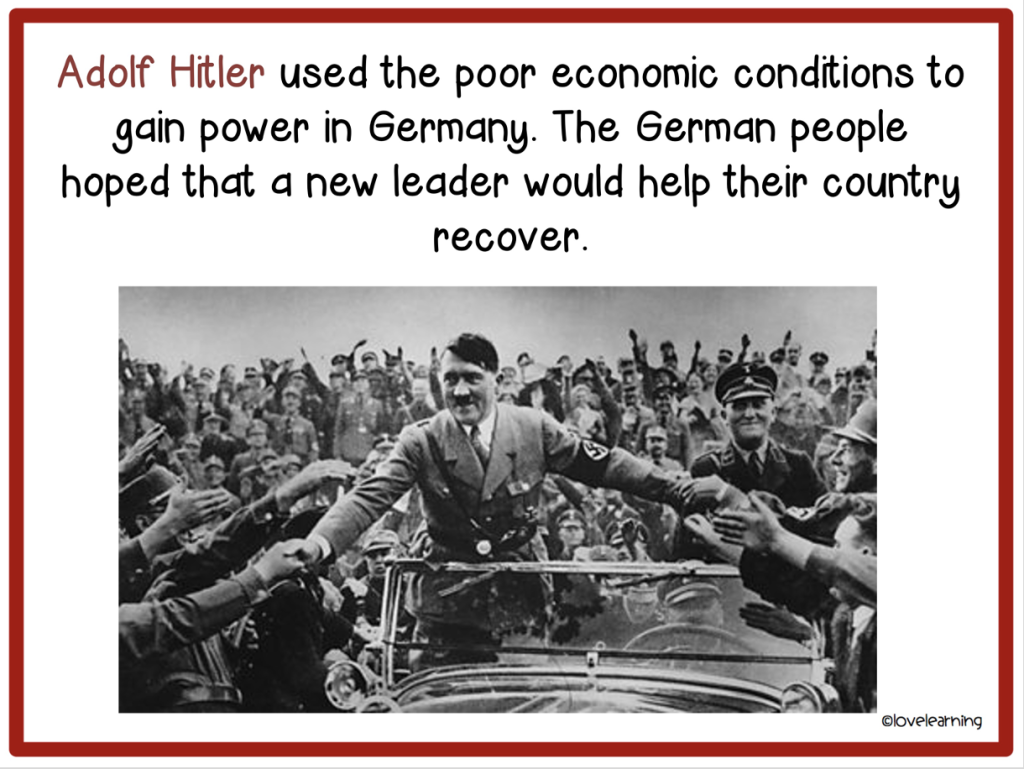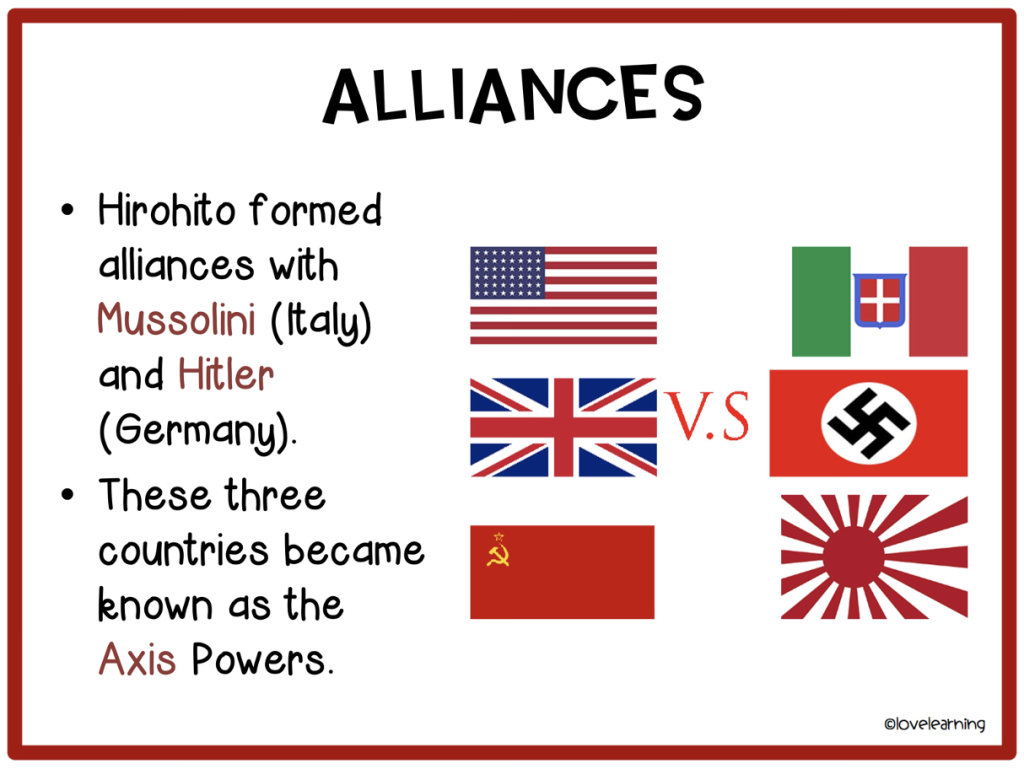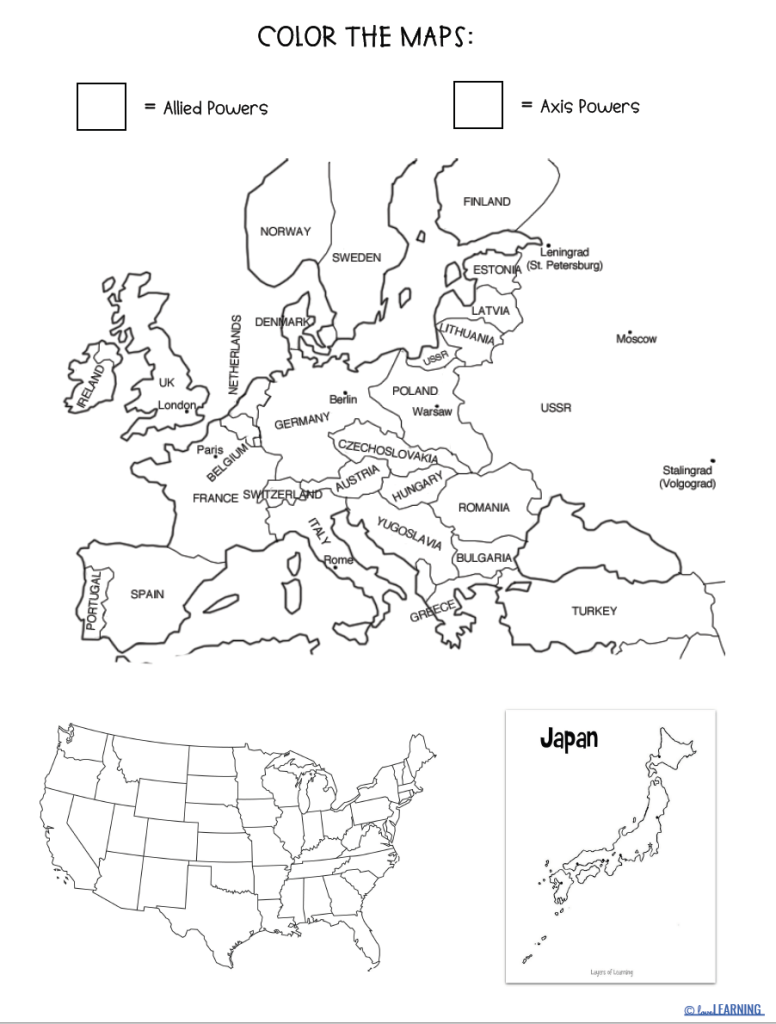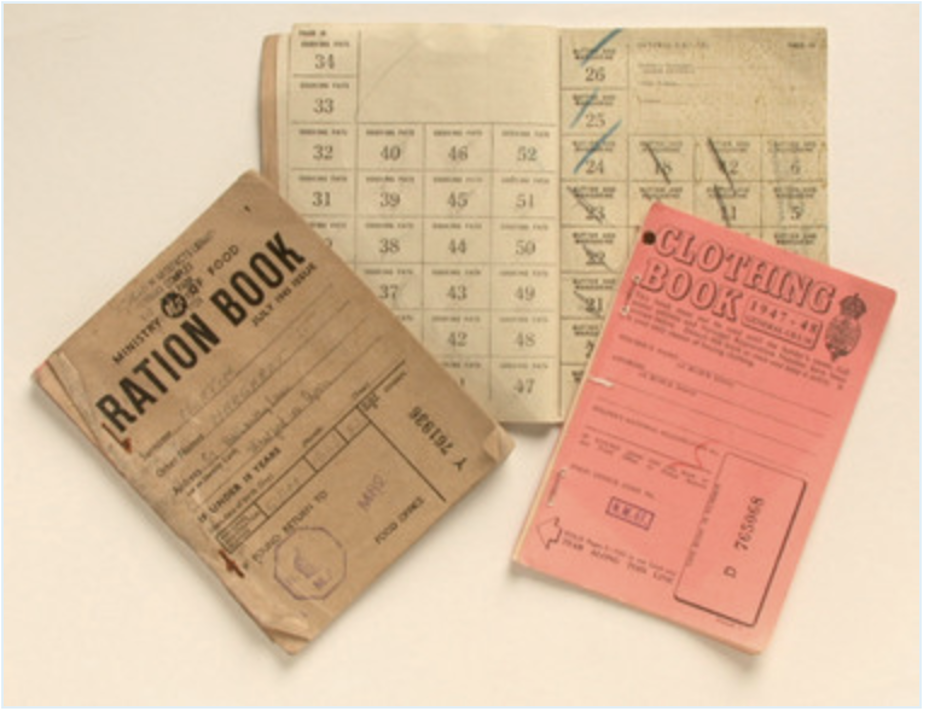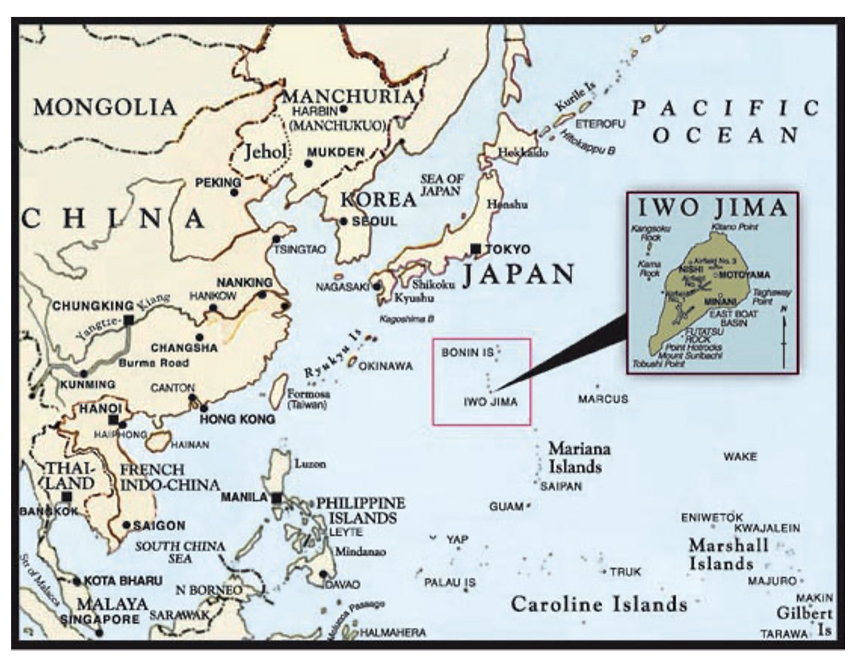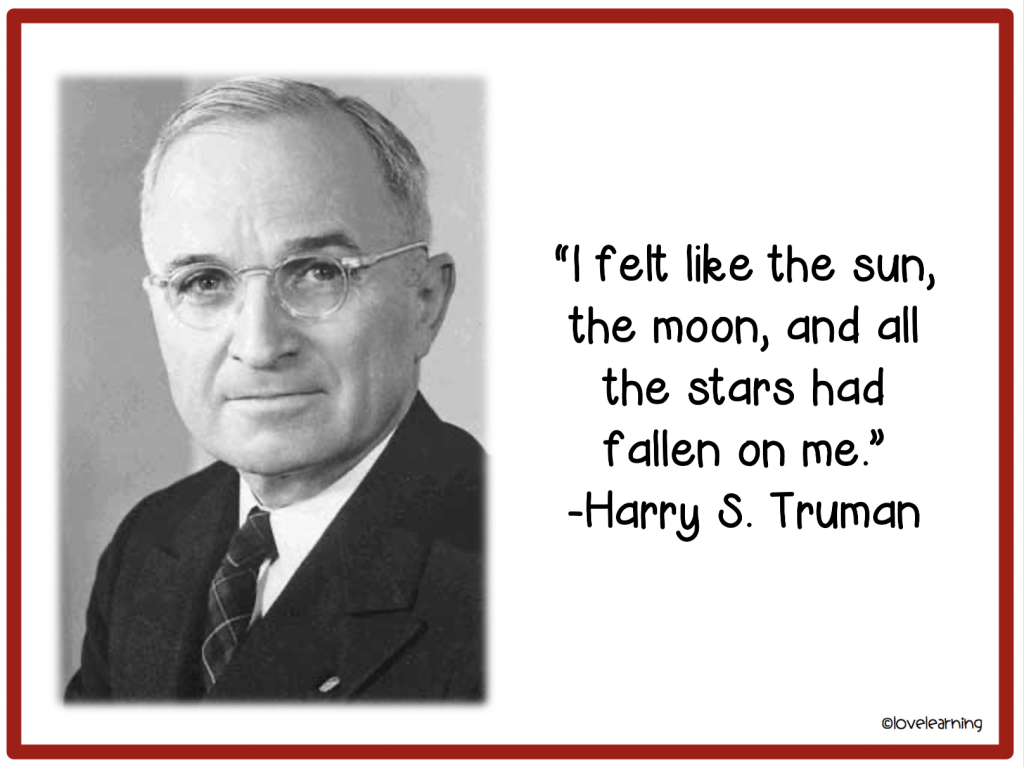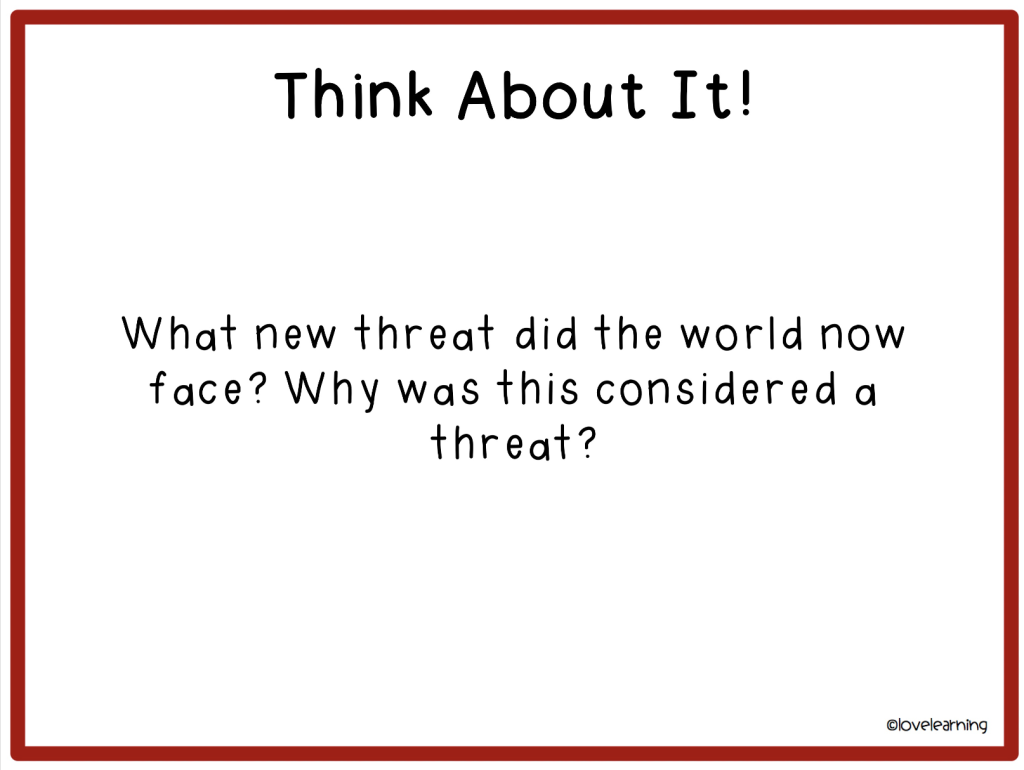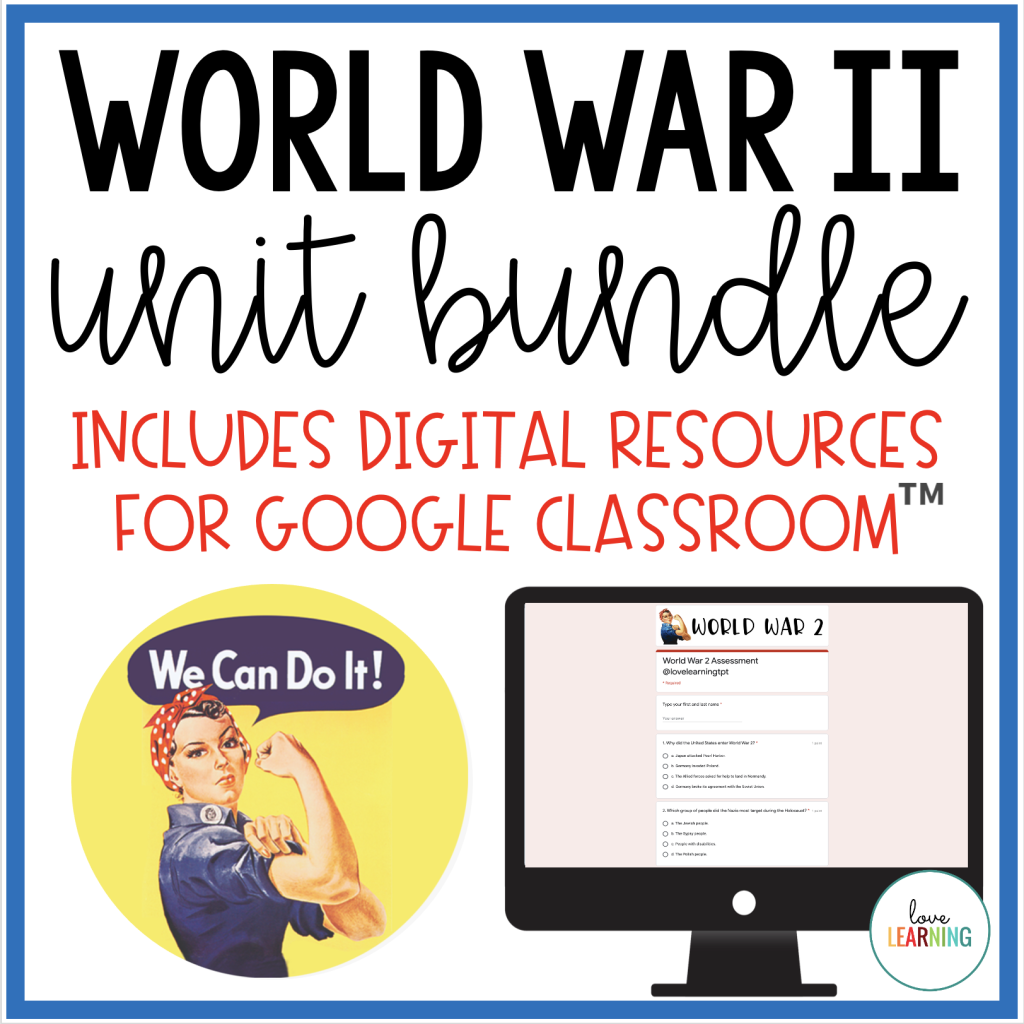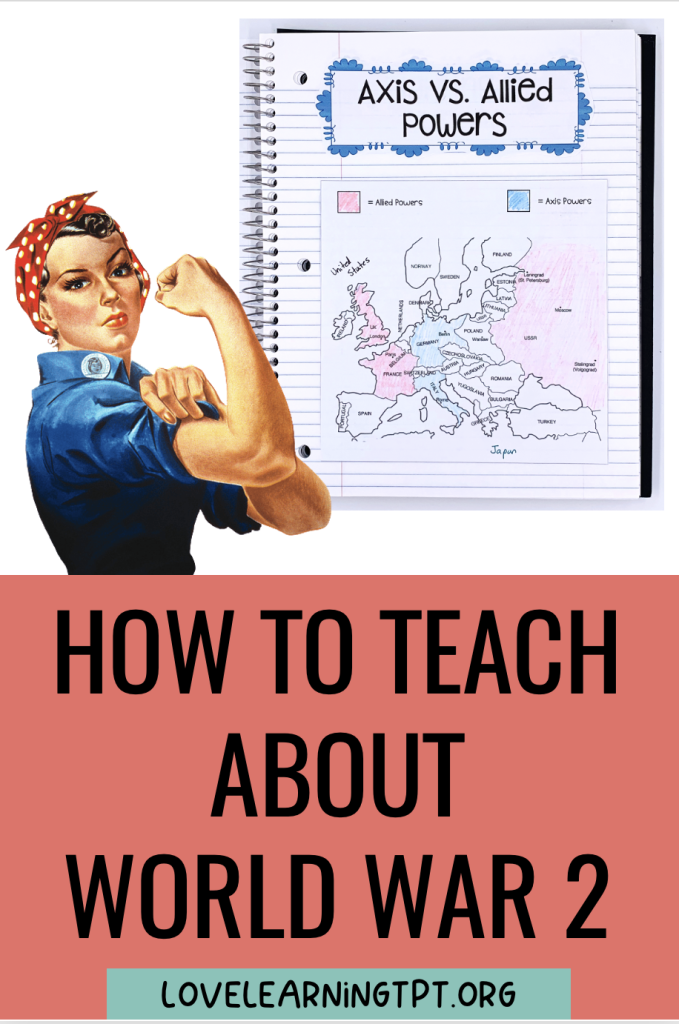Teaching students about World War 2 can be tricky, especially when teaching elementary and middle school kids. I’ve been helping my 5th grade students learn about World War 2 for more than 16 years, and I’ve learned some teaching tips along the way. Read below to learn how to teach about World War 2.
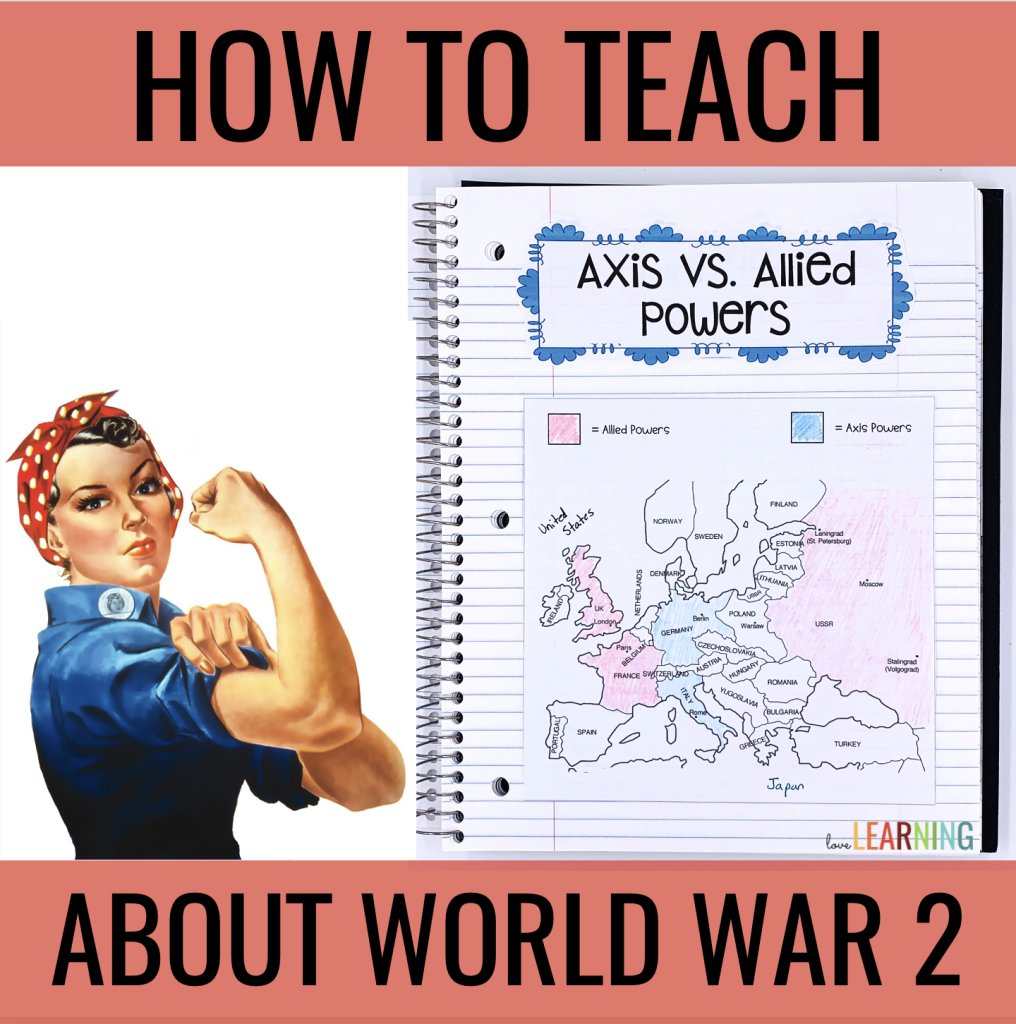
1. Introduce Students to the World War 2 Leaders
I always start my World War 2 Unit by introducing students to the world leaders at this time. This is important because it helps students build a foundation for which leader was on which side of the war, and it helps them understand the countries. I also use this as a time to discuss the differences between a dictatorship and a democracy.
I show my students videos throughout my unit to keep their attention. We live in an age filled with amazing technology – our history lessons should never be boring! The link below is a perfect 1-minute engaging video about Franklin D. Roosevelt:
2. Explain how Germany and Japan gained power before World War 2
At the end of our World War 1 Unit, I spent some time helping my students understand the Treaty of Versailles and the effect that it had on Germany.
Since I taught about the Great Depression right before this unit, I use that as a starting point to explain how Adolf Hitler used his country’s poor economic conditions to gain power in Germany which eventually led to World War 2.
Germany and Japan built military alliances and started taking over smaller and weaker countries as they grew in power. We talk about how the pressure is rising and rising (kind of like shaking a bottle of Coke) until you open the cap and it explores. In this case, until a war begins.
3. Always teach students about World War 2 with a map!
One of the best ways to teach students about World War 2 is with a map. This is an important one! Students will have a very hard time understanding World War 2 without first understanding the geography. Since I teach 5th graders, I keep the map fairly simple. I want them to have a basic understanding of the Axis Powers and the Allied Powers. They have to also understand where Japan is and how close it was to the Hawaiian Islands. Students at this age do not have a firm grasp of world geography, so you have to show them.
I highly suggest having a globe handy as well since looking at a flat map is different than looking at a globe. A globe will help students see just how close Japan was to Pearl Harbor.

4. Teaching Students about the Holocaust
This is a tough one with younger students. DO NOT go into too much depth, and do not show them graphic pictures. Approach this heartbreaking topic with sensitivity. What happened here was tragic, and you should tell students that.
One of the best ways to teach this topic to younger students about World War 2 is through picture books. There are so many that do a great job of explaining the major events without graphic details.
I have found that the number one question that students ask me is, “Why the Jewish people?” To answer this question, I start by reading the book, Remember Not to Forget.
I wrote a post about different books that you can use during this unit here.
I also introduce students to Anne Frank, and although they are too young to read her diary in 5th grade (although it is appropriate in middle school), we do explore this site where they can take a virtual tour of her secret annex.
This video below is also age-appropriate and a great way for students to hear from a Holocaust survivor.
5. The Major Events, Battles, and Victory in Europe
Since we live in America, my students really enjoy learning about life in America during World War 2. This is when I teach them about Rosie the Riveter and heroes like the Tuskegee Airmen. We also complete a real-world rationing activity where students have to plan a meal using ration points. They LOVE it and it gives them a very clear understanding of what it was like to ration food.
Since I teach 5th graders, I don’t go into too many of the battles. They will have time to dig into these in middle school and high school.
I touch on the following battles: Battle of Midway, Battle of Stalingrad, and Battle of the Bulge. I then spent a bit of time on the D-Day Invasion. This helps students understand that the Allies were able to attack Germany from the east and the west and eventually force them to surrender.
6. Victory in Japan and the Atomic Bomb
When teaching about World War 2, my students are always excited to learn that the Allies defeated the Axis powers and gained Victory in Japan, and they are always surprised when I tell them that the war is not over YET. The war is still raging in Japan.
When retelling history, I always try to teach my students as if it were a story. Try to avoid inputting your own opinions and try to tell the story from both perspectives.
For this part of the unit, I focus on the following questions topics:
- The Battle of Iwo Jima: Help students understand how small this island was compared to the big island of Japan, and how challenging this fight was for Americans.
- Harry Truman suddenly becomes president. During this part of the unit, I spend a bit of time talking about the life of Franklin D. Roosevelt. He was president for a long time, and the Americans were greatly saddened by his sudden death.
- The decision to drop the Atomic Bombs. This is a tough one. Students are young and haven’t experienced much life, so unless you tell them – they won’t truly understand that this was a difficult decision. Help them understand the impact of the atomic bombs and the effects of them on the lives of innocent people.
7. End your unit by previewing the next
One of the mistakes that I have made as a history teacher is ending a unit and not considering how this historical event leads to the next one. I’ve done a better job of this throughout the years. At the end of our World War 2 unit, I have my students stop and think about how the use of the atomic bomb might impact the world in the future.
This quick discussion will of course lead us into our next unit: The Cold War.
If you are interested in my no-prep World War 2 Unit, you can find it here!
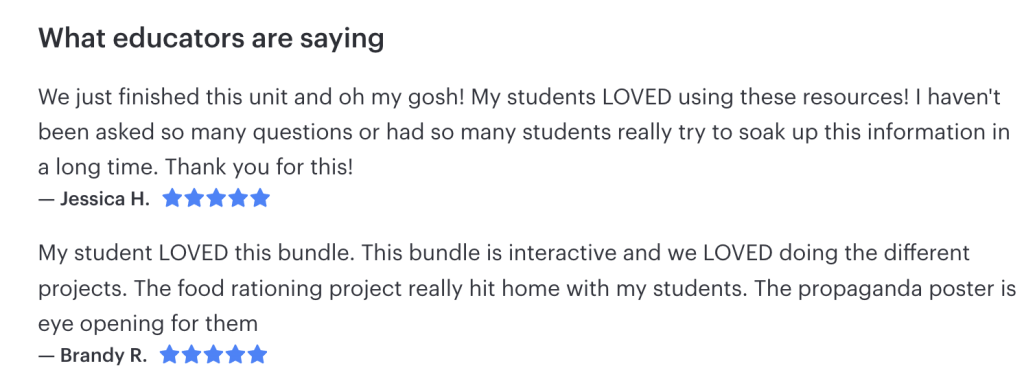
Make social studies interesting and watch your students love ❤️ learning!
Happy Teaching!

PIN THE IMAGE BELOW TO SAVE THIS POST FOR LATER!

